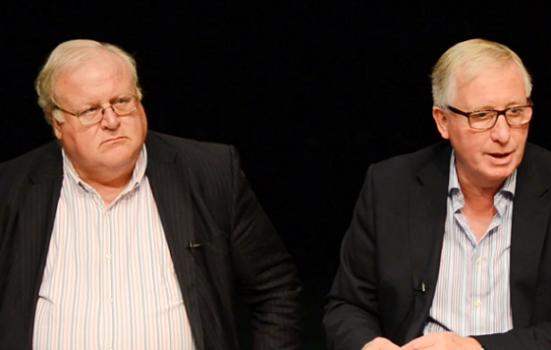At the heart of its new 5-year Corporate Plan is a commitment to ensuring diversity among those it funds, and to improving the financial resilience of both arts organisations and individual artists.

Arts Council of Wales
The Arts Council of Wales (ACW) is aiming to double the number of Black and Minority Ethnic (BME) and disabled arts workers in Wales and treble the number of BME and disabled people on the boards of ACW’s portfolio organisations by 2023.
To achieve this it will be introducing targets for disabled and BME staff working in its core-funded arts organisations.
An ACW spokesperson told AP that the targets will in the first instance rely on a “collaborative and committed spirit” among the 67 organisations that receive regular funding, but it will consider implementing sanctions if it does not see progress “very quickly”.
The comments were made as the national funder released its Corporate Plan for the next five years, which also prioritises increasing earnings for individual artists and expanding arts and health initiatives in a bid to make the arts “central to the life and wellbeing of the nation”.
Diversity
The Plan notes that just 102 people in the Arts Portfolio Wales (APW) workforce identify as disabled (2%), and 159 as BME (3%). Equally, it says that out of 700 Board members, 222 are Welsh language speakers, but just 17 are disabled and 12 are from a BME community.
ACW already publishes aggregated data on the diversity of the APW workforce, but it will consider going further as it engages in discussion with arts organisations over the coming months.
A spokesperson told AP that initial discussions with organisations have been “positive and encouraging”, and that ACW will be introducing workforce and governance targets they feel are reasonable to achieve.
“We are trying to take a fresh approach. We want to move ahead positively and creatively with the sector and don’t want our first comments to be about punishments, sanctions and ratings. In our view, there is a real and genuine appetite to work with us to address these issues. If we’re right, we’ll see progress very quickly.
“If we’re not, then we will have to re consider our approach.”
The commitment to diversity follows a lead taken by Arts Council England, whose National Portfolio Organisations (NPOs) are evaluated for their artistic contribution to the Creative Case for Diversity. In relation to the workforce, organisations are asked to “identify aspects of their work they want to improve on”.
Learning from England
ACW also plans to increase investment in the creative work of disabled and BME artists with a series of schemes modelled on successful ACE programmes. These include ‘Ramps on the Moon’ – the six-year project linking disabled and non-disabled performers and practitioners – and ‘Changemakers’, which offers BME and disabled arts workers senior leadership training and a placement at a core-funded organisation.
In addition, ACW told AP it will be consulting later in the year on new funds to encourage more culturally diverse activity.
“The brutal fact remains that too many people are effectively denied the opportunity to enjoy, take part or work in the arts,” said ACW Chair Phil George. “If we believe that the life enhancing experiences of the arts, of imaginative expression, are crucial for a healthy and dynamic society, then they should be available to all.”
Resilience
The Plan also commits ACW to providing funding to encourage the resilience and durability of artists and arts organisations.
To improve the sustainability of individual artists’ practice, it wants to see a 10% increase in average earnings for individual artists in real terms.
Its commitment to supporting the sustainability of arts organisations follows the publication of a Welsh Assembly report that concluded more public support is needed to help them seek alternative sources of funding and address a fundraising “skills deficit”. The report noted that initiatives such as Arts & Business Cyrmu’s Creative Internships Programme, which aims to reduce such a deficit, should be “funded appropriately”.
Assembly Members had separately criticised ACW for withdrawing an annual £70k core funding grant for Arts & Business Cyrmu and requiring the organisation to submit funding bids to carry out its activities.
An ACW spokesperson told AP that, rather than commit to restoring Arts & Business Cyrmu’s core funding, the Plan refers instead to enabling change directly within its Portfolio Organisations, including the continuation of its “Resilience” programme.
“We do, however, see a role for organisations such as Arts & Business Cymru as well as other organisations in Wales. Our preference is to procure specific business development services, rather than generalised funding, and this is what we envisage doing in the future.
“We see no reason why Arts & Business Cymru couldn’t secure future funding from the Arts Council, as indeed it currently does.”
Participation
As well as outlining goals for the development of the sector over the next five years, the Plan identifies a series of aims relating to audiences and participants. Increasing arts attendance to 4.5m over the five-year period; establishing statistically reliable data for lottery programmes by 2020; and reversing declines in audiences for Welsh language theatre and achieving a ten-percentage point increase in attendance are all listed as priorities.
In addition, ACW will be implementing an action plan for Arts and Health, which will involve identifying new funds to encourage collaborative working, research and strategic partnerships with Health Boards across the country




